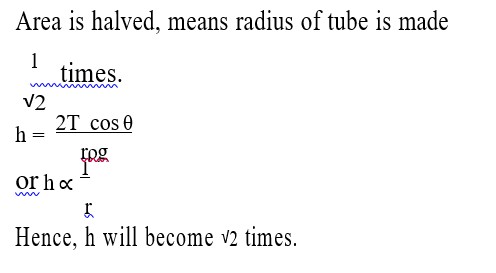Diatomic molecules like hydrogen have energies due to both translational as well as rotational motion. From the equation in kinetic theory pV =2/3 E , E is
(a) The total energy per unit volume
(b) Only the translational part of energy because rotational energy is very small compared to the translational energy
(c) Only the translational part of the energy because during collisions with the wall pressure relates to change in linear momentum
(d) The translational part of the energy because rotational energies of molecules can be of either sign and its average over all the molecules is zero
Diatomic molecules like hydrogen have energies due to both translational as well as rotational motion. From the equation in kinetic theory pV =2/3 E , E is
(a) The total energy per unit volume
(b) Only the translational part of energy because rotational energy is very small compared to the translational energy
(c) Only the translational part of the energy because during collisions with the wall pressure relates to change in linear momentum
(d) The translational part of the energy because rotational energies of molecules can be of either sign and its average over all the molecules is zero
-
1 Answer
-
This is a multiple choice answer as classified in NCERT Exemplar
(c) According to kinetic theory, we know walls only exert perpendicular forces on molecule. They do not exert parallel force . so there is only change in translational motion.
So pV=2/3E
Where E is representing only translational part of energy.
Taking an Exam? Selecting a College?
Get authentic answers from experts, students and alumni that you won't find anywhere else
Sign Up on ShikshaOn Shiksha, get access to
- 66k Colleges
- 1.2k Exams
- 680k Reviews
- 1800k Answers



